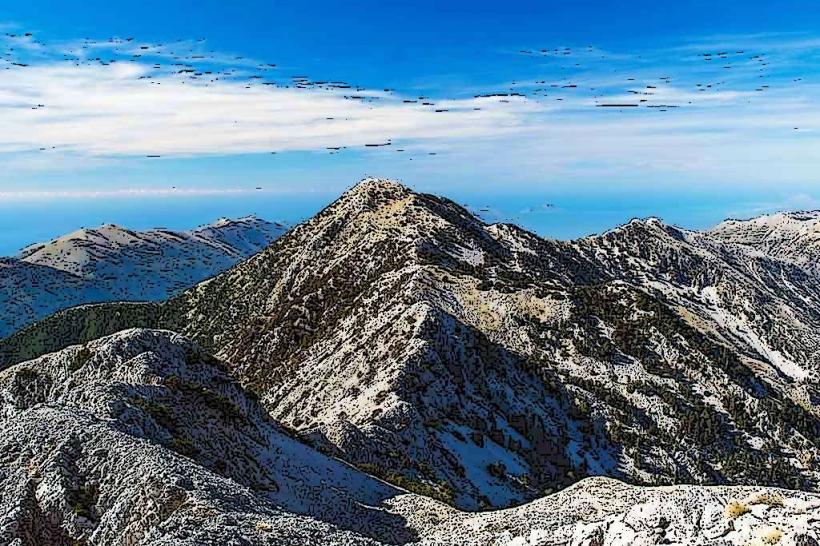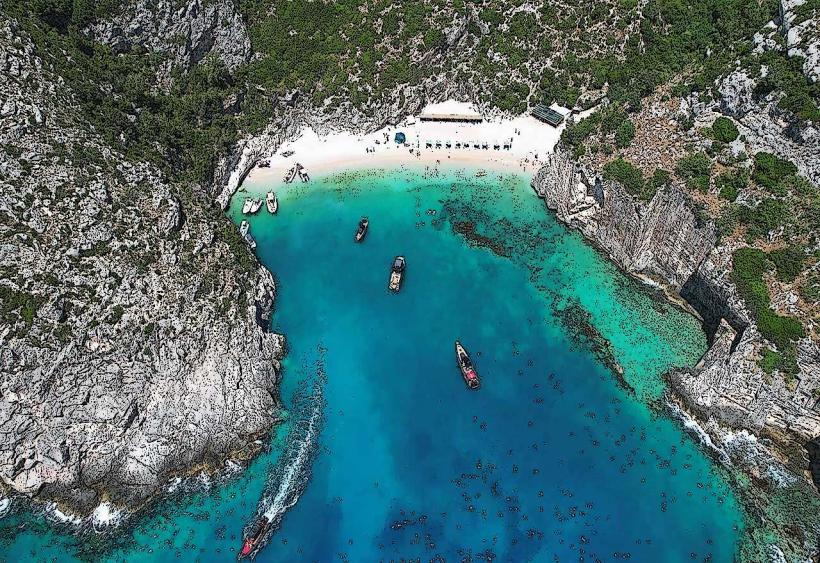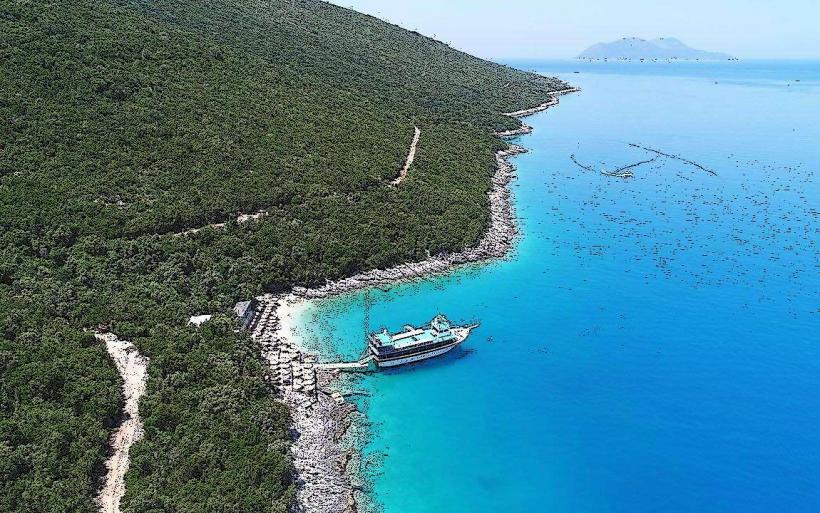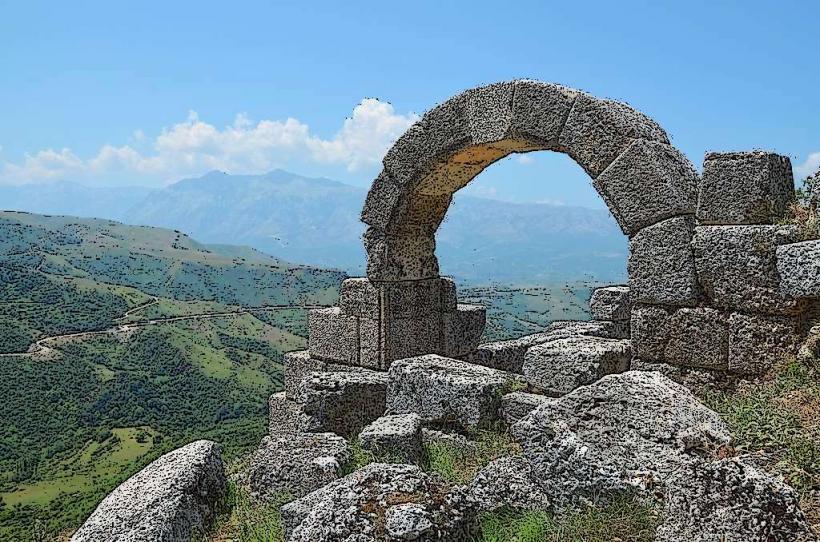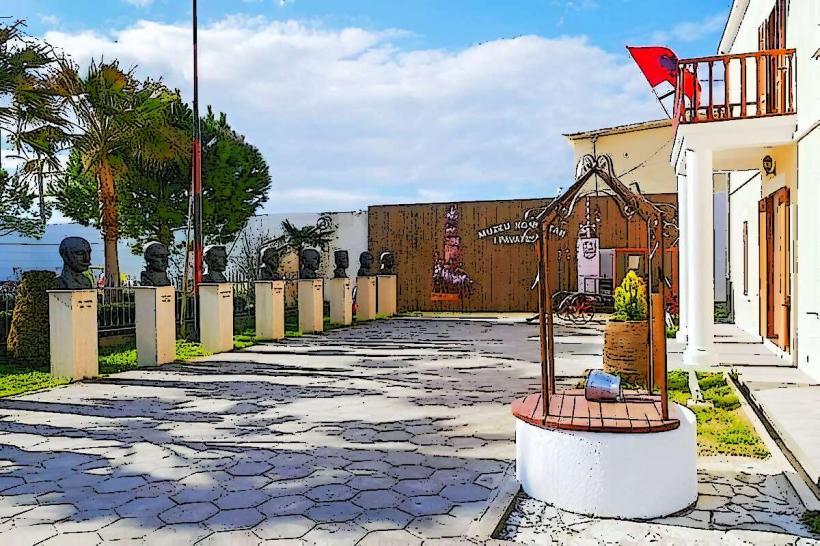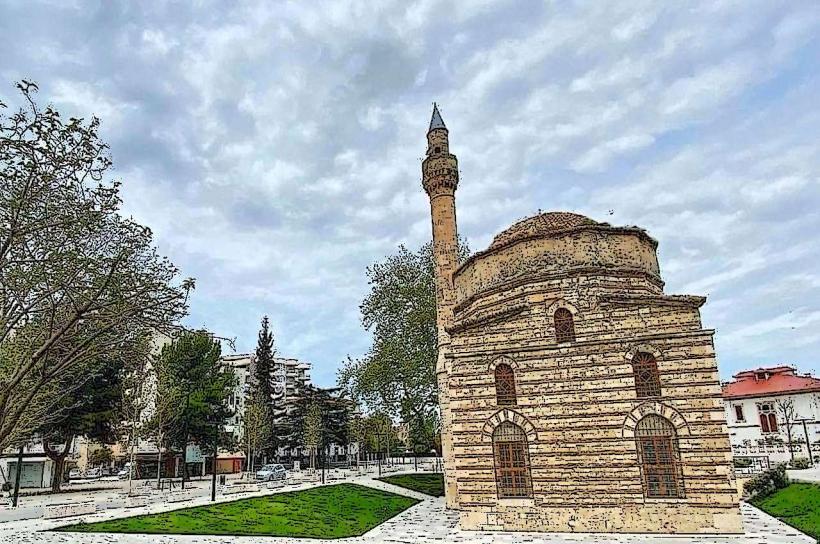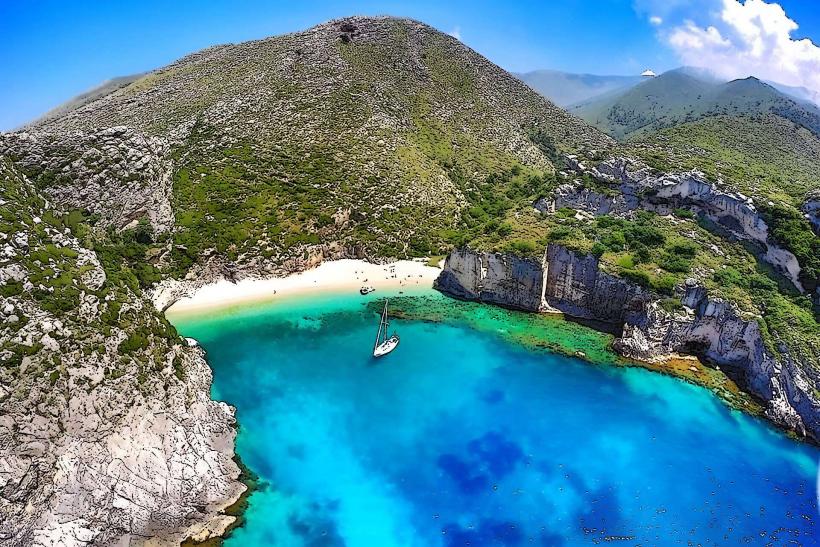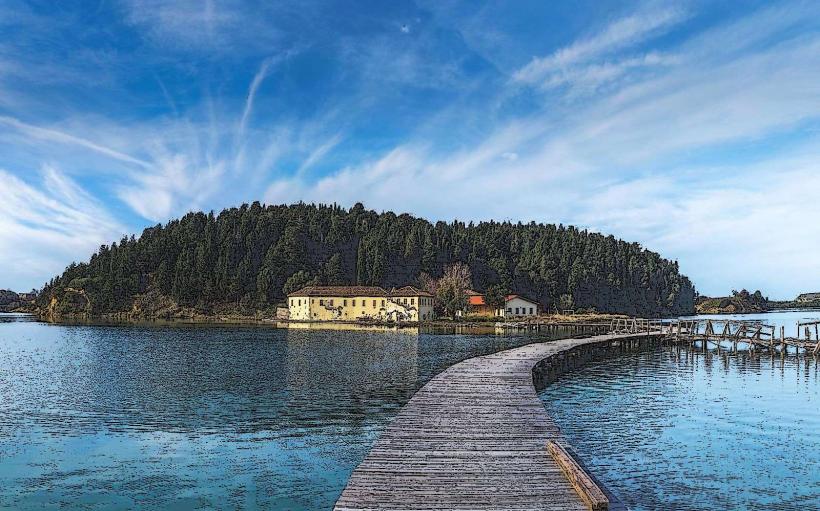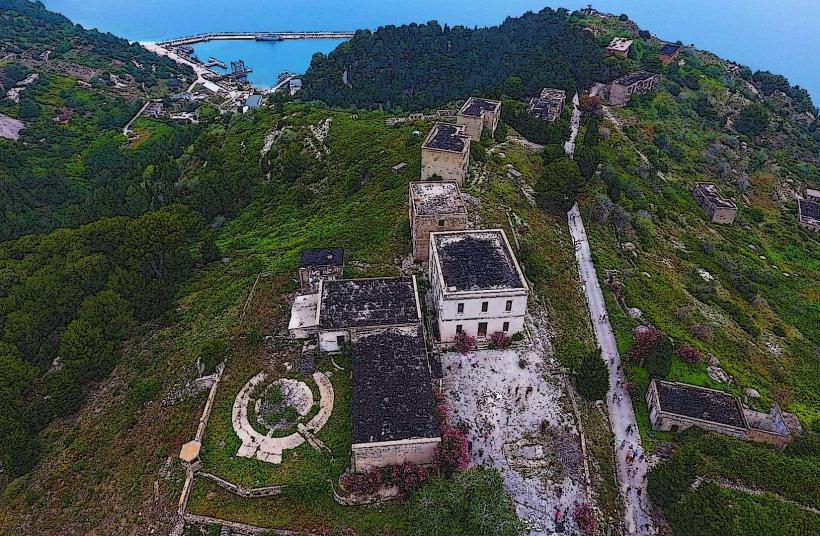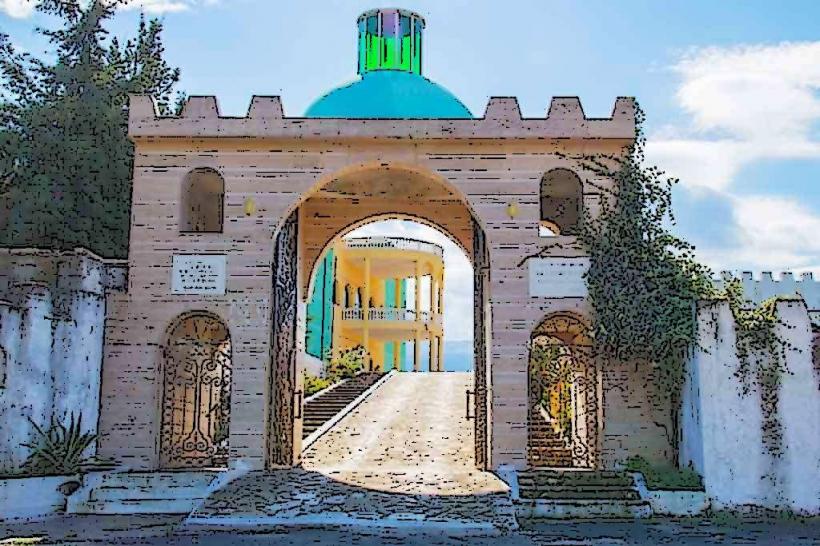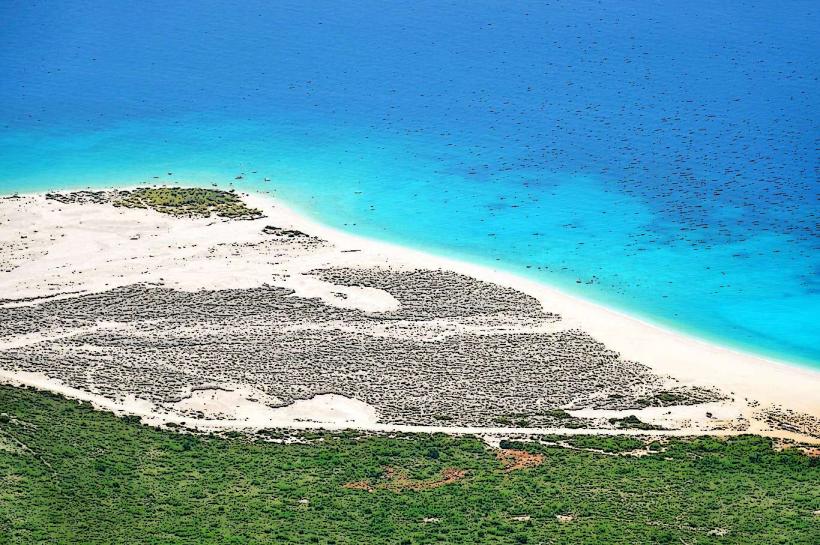Information
Landmark: Vjosa National ParkCity: Vlora
Country: Albania
Continent: Europe
Vjosa National Park is one of Albania’s most significant and ecologically valuable protected areas, located in the southern part of the country. It centers around the Vjosa River, one of the last wild rivers in Europe that remains largely unaltered by dams or other major human interventions. The river and its surrounding ecosystems form a unique landscape, rich in biodiversity and natural beauty.
Overview of Vjosa National Park
Location: Vjosa National Park is situated primarily in the southern region of Albania, flowing through the Vjosa River basin. It encompasses parts of the Vjosa River, the Përmet District, and the Kolonje District, extending to the borders with Greece. The park spans nearly 200,000 hectares, covering a variety of ecosystems, including rivers, wetlands, forests, and meadows.
The Vjosa River: The river itself is the heart of the park, and its unregulated flow is the key feature that makes the area so ecologically significant. The Vjosa is one of Europe’s last free-flowing rivers, providing a habitat for a wide array of plant and animal species, many of which are rare or endangered.
Ecological Significance
Biodiversity: The park hosts a diverse range of flora and fauna, including numerous bird species, mammals, reptiles, amphibians, and a variety of plant species. Notable species include:
- Brown bears and wolves, which roam the forested areas surrounding the river.
- Endangered bird species, such as the Egyptian vulture and griffon vulture, which are found in the park’s mountainous areas.
- Freshwater fish species, including the Vjosa trout, which are important to the local ecosystem.
- Unique plants in the wetlands and floodplains, including reed beds and aquatic vegetation, which thrive along the river’s banks.
Rich Wetlands and Ecosystems: The park encompasses wetlands, floodplains, and riparian ecosystems, supporting diverse wildlife. The Vjosa River Valley is an important migratory route for birds and plays a crucial role in the regional water cycle.
Riverscape: The Vjosa is an important feature of the landscape, with its meandering path, natural floodplains, and gravel banks. The river is especially significant due to its lack of dams, making it an incredibly rare example of a free-flowing river in Europe. It provides crucial ecosystem services, including water filtration, flood regulation, and habitat for wildlife.
Main Attractions and Activities
The Vjosa River: The river itself is the park's central attraction, providing opportunities for activities such as canoeing, kayaking, and fishing. Adventurers and eco-tourists can enjoy exploring its wild, unspoiled waters. The river’s natural rapids, calm stretches, and diverse landscapes make it perfect for outdoor exploration.
Hiking and Nature Trails: Vjosa National Park offers hiking trails through forests, riverbanks, and hills. These trails provide visitors with views of mountainous terrain, lush green meadows, and scenic river landscapes. The park’s natural beauty makes it a great destination for those seeking an immersive outdoor experience, with various levels of hiking routes suitable for both beginners and experienced hikers.
Birdwatching: The park is an excellent location for birdwatching, particularly for migratory birds. The wetlands, floodplains, and riverbanks provide critical habitats for species such as herons, eagles, and storks. Birdwatchers can enjoy the serene atmosphere of the park while spotting a variety of avian species.
Wildlife Watching: Besides birds, the park is home to other wildlife, including wild boar, foxes, deer, and small mammals. Observing these animals in their natural habitat is one of the main attractions for visitors to the park.
Cultural and Historical Sites: In addition to its natural wonders, Vjosa National Park is home to several historical and cultural sites. These include traditional Albanian villages, ancient monasteries, and ruins dating back to the Ottoman era and earlier. Visitors can explore the park’s rich heritage while enjoying its natural beauty.
Conservation and Environmental Importance
Endangered Ecosystem: The Vjosa River basin is a unique ecosystem, and the park’s free-flowing status has made it a symbol of ecological preservation. It is one of the few rivers in Europe that has not been significantly altered by human activity such as damming or water diversion. This makes the Vjosa River and the surrounding landscape an invaluable natural resource, providing a crucial habitat for wildlife and contributing to the preservation of biodiversity.
Environmental Advocacy: There has been a growing movement to protect the Vjosa River from the threat of hydropower development. Various environmental groups have campaigned for the official protection of the river and the creation of a national park. In 2020, Albania declared Vjosa River and its surrounding areas as a protected national park, ensuring its future protection from large-scale infrastructure projects that could harm its natural state.
Sustainable Tourism: The creation of Vjosa National Park offers the opportunity for sustainable tourism that promotes eco-friendly practices and contributes to the local economy. The park’s management emphasizes the importance of maintaining the balance between conservation and tourism, ensuring that the natural environment is preserved while still allowing visitors to experience its beauty.
Best Time to Visit
Spring (April to June): Spring is one of the best times to visit Vjosa National Park, as the weather is mild, and nature is in full bloom. The rivers and wetlands are lush with greenery, and it is a great time for birdwatching and hiking.
Summer (July to September): Summer months offer the opportunity to enjoy activities such as kayaking and fishing in the river. The park's moderate altitude means that the temperatures are generally comfortable, though visitors should be prepared for occasional rainfall.
Autumn (October to November): The autumn months bring vibrant fall colors to the park, making it a beautiful time for hiking and photography. The cooler temperatures are perfect for outdoor activities.
Winter (December to February): While winter in Vjosa National Park is colder and may limit certain activities, it can offer a peaceful atmosphere and a chance to see the park in a quieter season. The snow-capped mountains and frost-covered landscapes create a magical scene.
Nearby Attractions
Përmet: A nearby town known for its natural hot springs, particularly the Bënja Thermal Springs, and its picturesque landscapes. Visitors to Vjosa National Park can explore the town's rich cultural heritage and experience the soothing waters of the thermal springs.
Gjirokastër: The UNESCO-listed town of Gjirokastër is a short distance from Vjosa National Park. The town is known for its well-preserved Ottoman-era architecture and Gjirokastër Castle.
The Ionian Coast: The southern coast of Albania, known for its beautiful beaches such as Jale Beach and Ksamil, is not far from Vjosa National Park. Visitors can combine a visit to the park with a trip to the coast.
Conclusion
Vjosa National Park is a rare and precious natural area that offers a sanctuary for both wildlife and visitors seeking a connection with nature. Its free-flowing river, diverse ecosystems, and stunning landscapes make it one of Albania's most important ecological treasures. Whether you are an eco-tourist, an adventure seeker, or simply someone looking to experience the untouched beauty of Albania, Vjosa National Park provides an exceptional destination.

